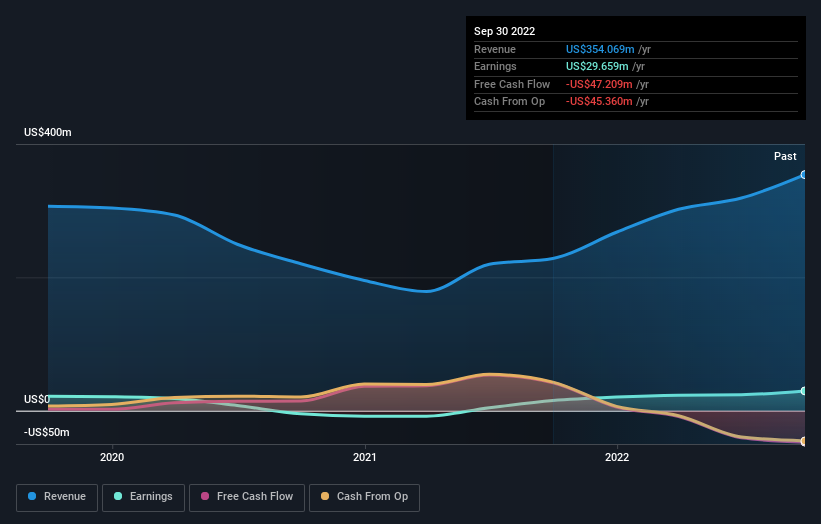Although Weyco Group, Inc. (NASDAQ:WEYS) insiders have sold lately, they have the highest ownership with 39% stake
To get a sense of who is truly in control of Weyco Group, Inc. (NASDAQ:WEYS), it is important to understand the ownership structure of the business. The group holding the most number of shares in the company, around 39% to be precise, is individual insiders. Put another way, the group faces the maximum upside potential (or downside risk).
Despite selling some shares recently, insiders control a good portion of the company's stock.
Let's delve deeper into each type of owner of Weyco Group, beginning with the chart below.
View our latest analysis for Weyco Group
What Does The Institutional Ownership Tell Us About Weyco Group?
Many institutions measure their performance against an index that approximates the local market. So they usually pay more attention to companies that are included in major indices.
We can see that Weyco Group does have institutional investors; and they hold a good portion of the company's stock. This implies the analysts working for those institutions have looked at the stock and they like it. But just like anyone else, they could be wrong. If multiple institutions change their view on a stock at the same time, you could see the share price drop fast. It's therefore worth looking at Weyco Group's earnings history below. Of course, the future is what really matters.
We note that hedge funds don't have a meaningful investment in Weyco Group. Looking at our data, we can see that the largest shareholder is the CEO Thomas Florsheim with 12% of shares outstanding. In comparison, the second and third largest shareholders hold about 11% and 10.0% of the stock. Interestingly, the second and third-largest shareholders also happen to be the President and Chairman Emeritus, respectively. This once again signifies considerable insider ownership amongst the company's top shareholders.
We did some more digging and found that 9 of the top shareholders account for roughly 51% of the register, implying that along with larger shareholders, there are a few smaller shareholders, thereby balancing out each others interests somewhat.
While studying institutional ownership for a company can add value to your research, it is also a good practice to research analyst recommendations to get a deeper understand of a stock's expected performance. Our information suggests that there isn't any analyst coverage of the stock, so it is probably little known.
Insider Ownership Of Weyco Group
While the precise definition of an insider can be subjective, almost everyone considers board members to be insiders. Company management run the business, but the CEO will answer to the board, even if he or she is a member of it.
I generally consider insider ownership to be a good thing. However, on some occasions it makes it more difficult for other shareholders to hold the board accountable for decisions.
Our most recent data indicates that insiders own a reasonable proportion of Weyco Group, Inc.. It has a market capitalization of just US$222m, and insiders have US$87m worth of shares in their own names. It is great to see insiders so invested in the business. It might be worth checking if those insiders have been buying recently.
General Public Ownership
The general public-- including retail investors -- own 37% stake in the company, and hence can't easily be ignored. While this size of ownership may not be enough to sway a policy decision in their favour, they can still make a collective impact on company policies.
Next Steps:
I find it very interesting to look at who exactly owns a company. But to truly gain insight, we need to consider other information, too. Be aware that Weyco Group is showing 3 warning signs in our investment analysis , and 2 of those are concerning...
If you would prefer check out another company -- one with potentially superior financials -- then do not miss this free list of interesting companies, backed by strong financial data.
NB: Figures in this article are calculated using data from the last twelve months, which refer to the 12-month period ending on the last date of the month the financial statement is dated. This may not be consistent with full year annual report figures.
Have feedback on this article? Concerned about the content? Get in touch with us directly. Alternatively, email editorial-team (at) simplywallst.com.
This article by Simply Wall St is general in nature. We provide commentary based on historical data and analyst forecasts only using an unbiased methodology and our articles are not intended to be financial advice. It does not constitute a recommendation to buy or sell any stock, and does not take account of your objectives, or your financial situation. We aim to bring you long-term focused analysis driven by fundamental data. Note that our analysis may not factor in the latest price-sensitive company announcements or qualitative material. Simply Wall St has no position in any stocks mentioned.
Join A Paid User Research Session
You’ll receive a US$30 Amazon Gift card for 1 hour of your time while helping us build better investing tools for the individual investors like yourself. Sign up here

 Yahoo Movies
Yahoo Movies 


